A guide to growing curry and why this ancient herb is what your garden is missing
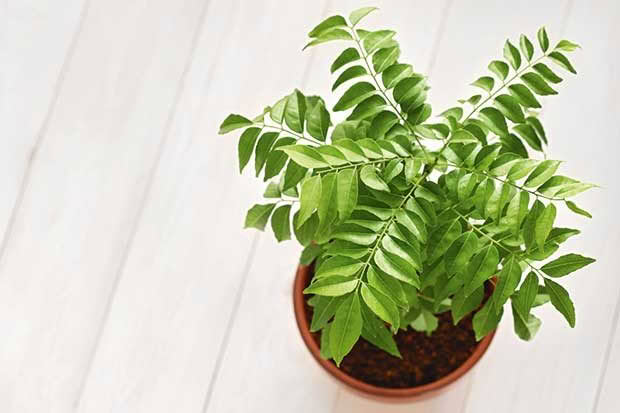
It’s always exciting to find a new herb, even if it’s one that has been around for thousands of years.
Words Jenny Somervell
“I’ve got it,” says Shane in a hushed voice. “But I’m hiding it. If my customers find out where it is, I won’t be able to stop them.”
Shane McCulloch runs an Asian vegetable pick-your-own glasshouse operation in the middle of residential Whanganui.
Customers who cannot contain their enthusiasm can find all of their favourite traditional Asian vegetables and herbs here.
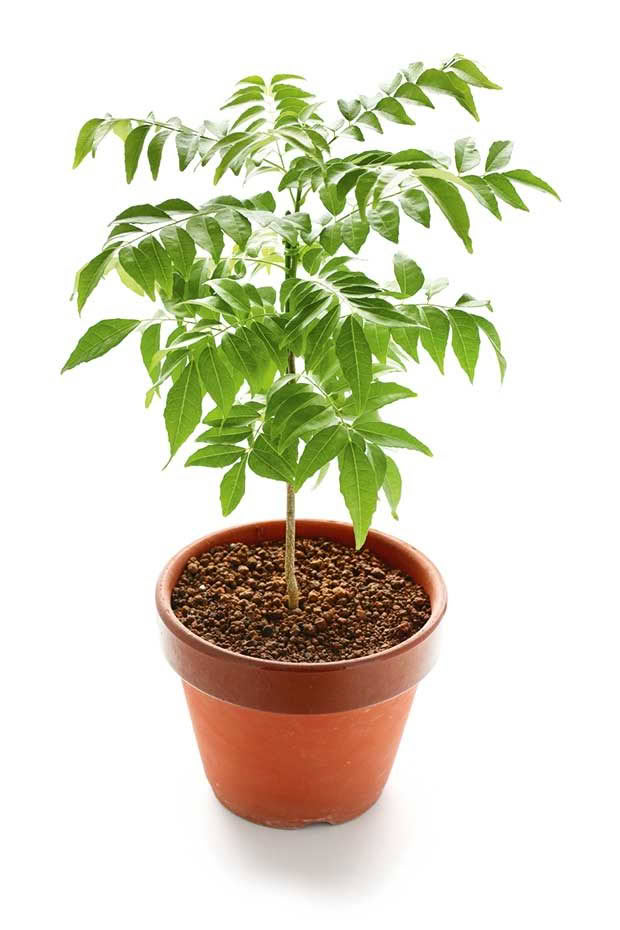
The way Shane is talking, you know you need to scurry along behind him. He moves quickly past the yard-long beans and triffid cucumbers to the back of the greenhouse. This is where he’s hiding his stash. There’s one in a pot, a much larger one in the ground.
“They weren’t doing well in pots so I planted one in the ground. It’s much happier!”
Shane tells me they sulked for a while in his greenhouse, then took off when planted near a dripping tap. The plants are available for picking most of the year, but he’s kept the secret for now.
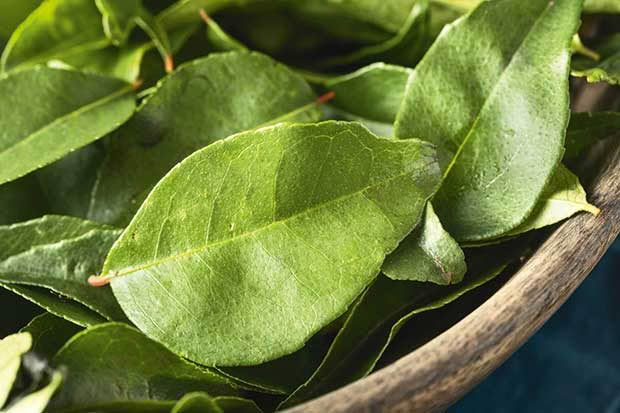
He cuts me a leaf. I have never seen it before, fresh off the tree. It’s nothing special to look at.
WHY FRESH IS BEST
The scent of the curry leaf is hard to describe at first sniff. There’s a warm, curry-like musk with hints of citrus and spice, and a faint bitterness. It is still subtle, but much stronger when you scrunch one in your hand.
This esteemed tree is highly sought-after in India for its aromatic leaves. In most Indian languages the foliage is referred to as curry leaves or sweet neem leaves (which distinguishes it from the ordinary neem leaves which have a bitter taste).
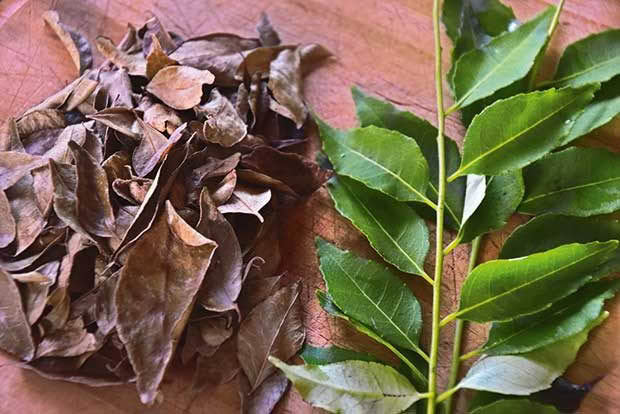
Curry leaves are indispensable in South Indian cooking. They are often in vegetable dishes, but also add subtle flavour to meat, seafood, chutneys, coconut sauces, relishes, marinades, omelettes, and vadas, a doughnut-like Indian snack.
It is impossible to substitute it. Dried leaves have significantly less flavour, which is why fresh curry leaves are so popular.
Shane’s plants inspire me to search for fresh curry leaves. After a few calls, I track some down.
CURRY LEAF FOR KIWIS
Using a new herb for the first time was enough for me to call for culinary reinforcements.
My Singaporean-born friend and chef Lilian Loh loves a challenge. She arrives loaded with ingredients, enthusiasm and imagination. Curry leaves, says Lilian, adapt very well to ‘Kiwi’ dishes.
There is much chopping. The fresh leaves go in a hot frypan for a few seconds, then come straight back out again.
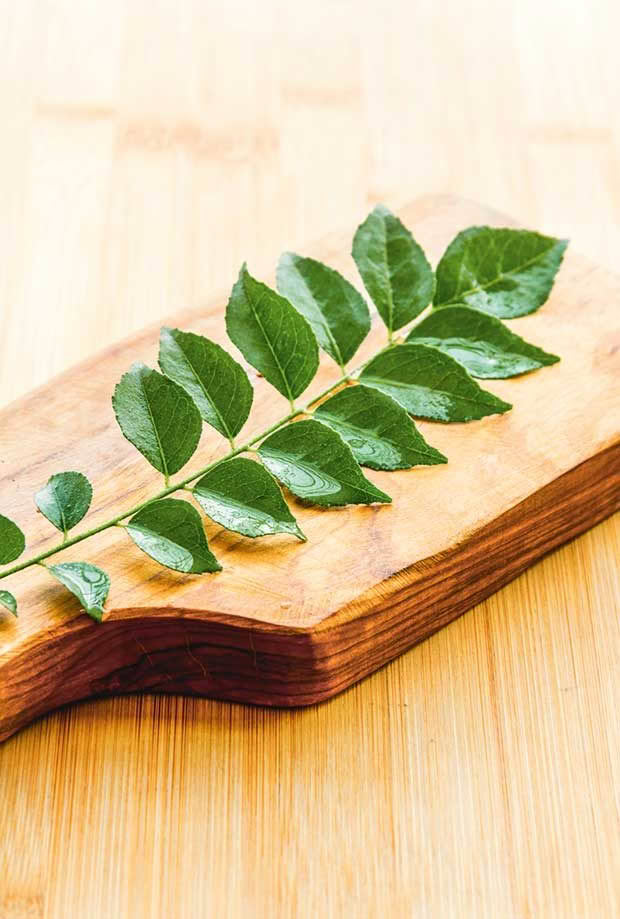
“Curry leaf needs cooking to develop the flavour,” says Lilian. “You can’t eat it as a fresh leaf, it is always flash fried in butter or fat.”
Lilian has the pan very hot and keeps the chopped leaves moving. The scent released is sensational.
She’s moved on to an adaptation of bhaji, a traditional spicy curry of mixed vegetables, using eggplant and potato. She cooks two versions, one with dried leaf, one with fresh curry leaf, to show me the difference.
“Now taste!” she instructs. She’s right. Fresh trumps dried.
My husband Ken is delighted to come home to a full-on tastefest. A nibble here, a nibble there. It’s beyond delicious.
I am so engrossed in the spicy sensations, I nearly forget to photograph the food.
The next night I pick up an unusual, tantalising flavour in Ken’s stir-fry. He’s sold on fresh curry leaves too.
CURRY TREE
Also known as: sweet neem, Murraya koenigii syn Bergera koenigii
Family: Rutaceae
Native range: Asia
Sun: Full sun to part shade
Features: Showy, fragrant white flowers, tangy leaves
The curry tree is a tropical to sub-tropical native of India, northern Thailand and Sri Lanka. It is also grown in plantations in Australia.
In its native habitat, it will grow 4-6m tall with a trunk up to 40cm in diameter. The 30cm-long leaves are divided into 11-25 ovate, shiny, dark green leaflets, 2.5-5cm long. It’s evergreen in its homelands, but deciduous in cooler climates.
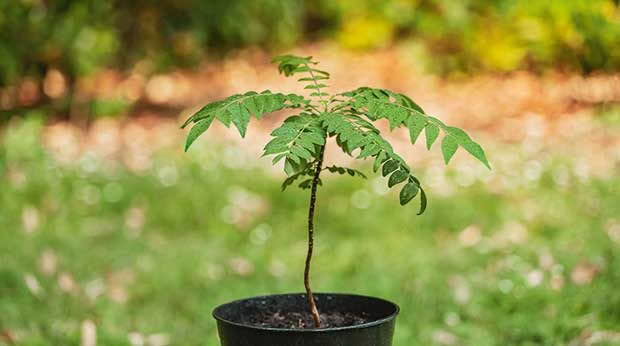
The sweetly-scented, white, funnel-shaped flowers bunch in clusters up to 40cm across. The flowers are followed by black, glossy fruits, generally containing two green seeds up to half the volume of the fruit.
The pulp is edible, sweet and high in vitamin C, but the seed is not.
HOW TO GROW CURRY LEAF TREE
The curry tree will grow from subtropical through to Mediterranean and temperate climates. If you can grow the related orange jessamine (Murraya paniculata), which tolerates occasional light frosts, then you can grow curry leaf.
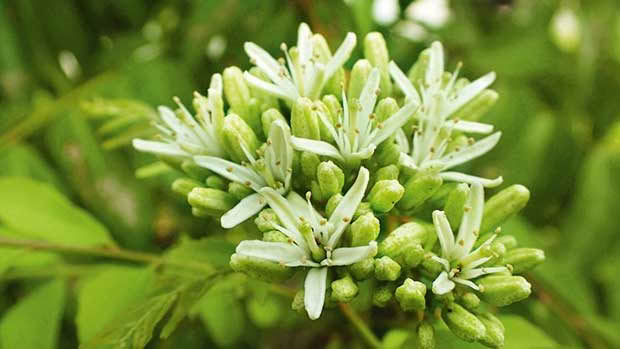
• If you do have frosts, it will grow in a pot indoors or in a conservatory or greenhouse. It makes an interesting and attractive pot plant or a tub plant, although it is likely to be slow growing, perhaps reaching a metre after several years.
• High humidity is preferred, but not essential.
• It will respond to liquid feeding.
• Cool winters or extremes in watering or humidity can cause leaves to turn yellow and fall.
• In THE ground, curry leaf trees like a rich, well-drained soil.
• Once established, it is quite drought hardy.
• If you obtain seeds, they will need to be fresh as they are only viable for about three weeks, and they need conditions to be warm (21°C) to germinate.
HOW TO USE
The leaf is too fibrous to use in its raw state, meaning you can’t use it fresh. You need to strip the leaflets off the central stalk and tear or crush them before quickly frying them in a hot pan to release the flavour.
MEDICINAL USES
The plant is widely used in the Indian traditional medicinal system. It has been used as a tonic, for inflammation, dysentery, itching, fever, piles and pain relief.
A review of the research shows some anti-microbial, anti-oxidative and anti-ulcer activity, and activity in reducing cholesterol and diarrhoea.
THIS IS NOT THE CURRY LEAF YOU’RE LOOKING FOR
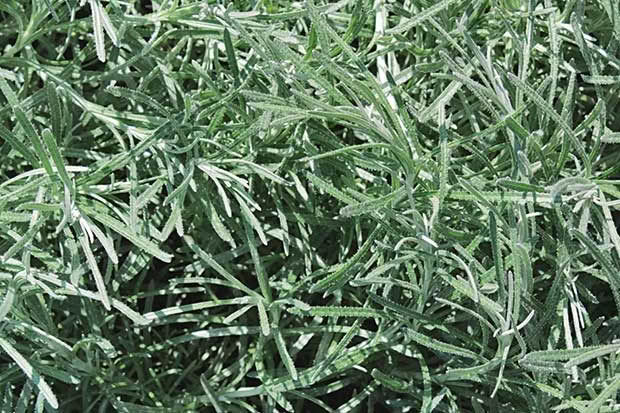
The grey-leaved curry plant is sometimes sold in garden centres. It is the unrelated Helichrysum italicum, an herbaceous annual/perennial of the aster family. Although its narrow needle-like leaves have a curry-leaf aroma, it is not a suitable substitute in Indian cuisine.
Curry leaf is also not always an ingredient in curry powder, which is a blend of a number of different Indian spices.
Love this story? Subscribe now!
 This article first appeared in NZ Lifestyle Block Magazine.
This article first appeared in NZ Lifestyle Block Magazine.
